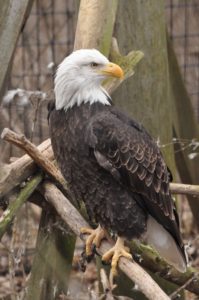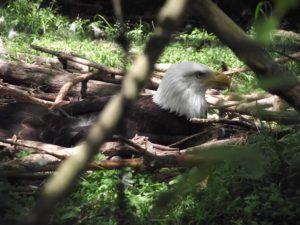BALD EAGLEHaliaeetus leucocephalus
Conservation Status: Least Concern
Lead poisoning, wind turbines, electrocution, chemical pollutants, poaching, predators, and habitat destruction led to population decline. Currently the population is increasing.

Learn More
Color:
Head & tail white (in adults); dark brownish gray body; beak, feet and eyes are bright yellow
Size:
6-7 feet wingspan, 33-43 inches in length
Weight:
9-13 lbs.
Average Lifespan:
30 years
Captive Lifespan:
up to 48 years
Most of North America
Most often seen near water including, coasts, rivers, and lakes
Mating:
March-April
Gestation/Incubation:
30-46 days
Litter/Clutch Size:
1-3
Mature:
4-5 years
Mostly fish, birds, and mammals
A diurnal, generally solitary hunter, that is commonly found near open waters. Most northern birds move south once water starts freezing. Many Florida based birds move north for the summer.
1. Builds an enormous nest, which is added to annually over many years. It is built with dead fall collected from the ground or snapped off trees in flight. Pine needles are often used for a lining.
2. Once Endangered due to the use of the pesticide DDT. After DDT was banned the Eagles made a comeback.


